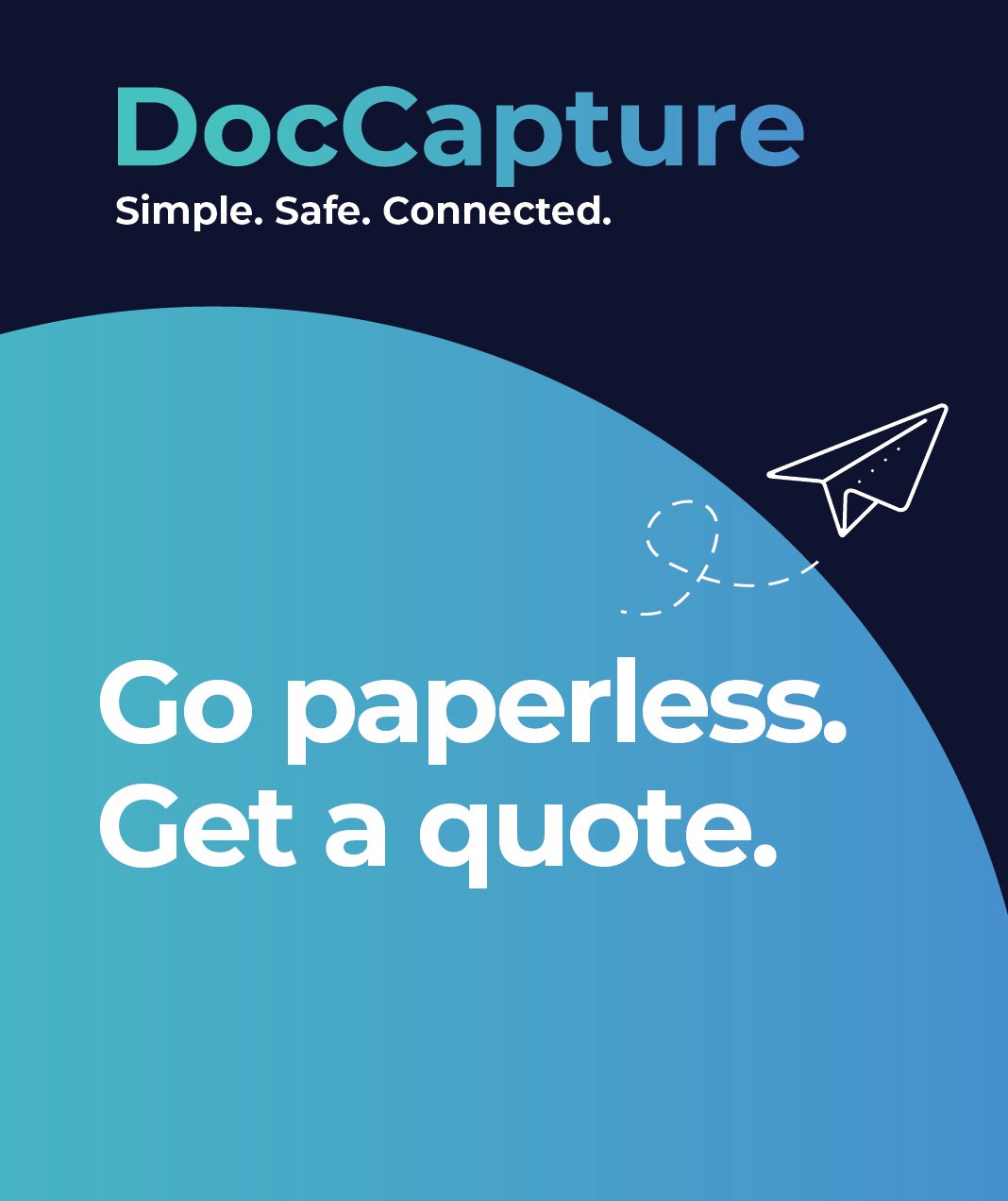From Filing Cabinets to Cloud: The Future of Document Management in HR
Table of contents
In countless HR departments across school boards and large enterprises, traditional paper filing systems continue to slow down operations. Rows of filing cabinets, lost forms, and time-consuming document retrieval aren’t just relics of the past—they’re daily obstacles for HR professionals striving to stay compliant, efficient, and secure.
The pressure to modernize is mounting. Digital transformation in HR is no longer a future goal—it’s a current necessity. Between evolving labor regulations, rising data privacy expectations, and tighter budgets, HR teams are being asked to do more with less. The transition to digital document management is emerging as a strategic answer.
Document management systems offer more than just cloud storage. These platforms help HR departments streamline operations, enhance compliance, boost security, and save both time and money. For CHROs, HR Directors, and Records Management Officers, embracing a DMS means moving beyond paper and empowering teams to focus on what really matters: people.
The Daily Burden of Paper-Based HR
Despite living in an increasingly digital world, many HR departments still rely on legacy systems rooted in paper. While familiar, these outdated processes come with a steep cost.
Time Lost to Manual Filing and Retrieval
Manual document handling can consume hours each week. Locating a specific employee file, retrieving archived contracts, or tracking down compliance records diverts valuable time and attention from strategic HR functions like talent development or workforce planning.
Security Vulnerabilities of Physical Records
Physical files are inherently at risk—from accidental loss or misfiling to unauthorized access. Unlike digital systems that offer encryption and controlled access, filing cabinets don’t log who opened a drawer or took a file. This lack of accountability leaves organizations exposed to data breaches and non-compliance issues, especially under regulations like HIPAA or GDPR.
Storage Limitations and Inefficiencies
Paper takes up space. As HR departments grow and regulations demand longer retention periods, physical storage becomes a logistical challenge. Overflowing cabinets, costly offsite storage, and difficulties in organizing high volumes of records hinder both productivity and compliance efforts.
Many HR leaders have already begun shifting away from these burdens. If you're considering a similar path, it’s worth exploring digital record keeping for human resources as a scalable, secure alternative.
Cloud-Based Document Management: A Strategic Upgrade
The shift from paper to cloud isn’t just about eliminating clutter—it’s a strategic decision that empowers HR departments to operate with greater agility, accuracy, and efficiency.
What a Document Management System Offers
A document management system (DMS) goes beyond digital storage. It creates a centralized, searchable repository where HR files are easy to organize, retrieve, and share. Features like version control, automated retention policies, and secure sharing options make managing records intuitive and error-resistant.
For a deeper dive into the potential, read about scanning HR documents and how it lays the foundation for digital HR operations.
Enhanced Access, Collaboration, and Remote Work
With cloud-based systems, authorized users can access files anytime, anywhere—perfect for hybrid teams or school boards spread across multiple sites. HR leaders can collaborate in real time, share onboarding documents instantly, and update records without duplication or delay.
This accessibility is key to the digital transformation in HR, enabling modern work environments and streamlined communication.
Automation and Streamlined Workflows
DMS platforms also automate repetitive tasks like file routing, employee onboarding, and policy acknowledgment tracking. These workflow efficiencies reduce manual input, eliminate bottlenecks, and ensure that documents flow seamlessly through the correct approval channels.
To see how automation gives HR departments a strategic edge, check out workflow software: the secret weapon for HR departments.
Compliance and Security Advantages
In HR, compliance isn’t optional—it’s mandatory. From handling sensitive employee data to maintaining audit-ready records, HR teams must align with a range of legal requirements. Cloud-based document management systems provide the tools needed to meet and exceed these obligations.
Meeting GDPR, HIPAA, and Other Regulations
Whether it’s the General Data Protection Regulation (GDPR) or the Health Insurance Portability and Accountability Act (HIPAA), modern DMS platforms are built to support regulatory compliance. Automated retention schedules, secure document destruction, and detailed audit logs help HR professionals maintain adherence without relying on manual tracking or guesswork.
A helpful reference is the 2023 Guide to HR Document Retention Requirements, which outlines key rules and best practices.
Controlled Access and Audit Trails
Not every HR team member needs access to every document. Role-based permissions allow leaders to restrict access to sensitive files, such as disciplinary records or salary information. Every interaction with a document is logged, providing a clear audit trail that supports internal accountability and external audits.
This level of oversight is especially valuable to compliance officers and records management officers tasked with protecting employee data and demonstrating transparency.
Encryption and Secure Cloud Storage
Top-tier DMS platforms use encryption both in transit and at rest to safeguard files. Combined with secure cloud hosting, two-factor authentication, and disaster recovery protocols, these systems ensure that HR data is protected against cyber threats and physical damage alike.
Cost and Efficiency Gains
One of the most compelling reasons for transitioning to a cloud-based document management system is the substantial savings in time, space, and money. For HR departments operating within tight budgets, the return on investment is clear.
Reduced Overhead from Storage and Labor
Eliminating the need for physical storage—filing cabinets, archive rooms, and offsite facilities—frees up space and reduces costs. Additionally, HR teams spend less time filing, retrieving, or duplicating documents, which translates into more time spent on strategic initiatives.
Discover how document scanning services for HR departments can immediately reduce physical storage needs and free up valuable resources.
Faster Onboarding and Offboarding
Digitized systems enable instant access to offer letters, policy documents, benefits information, and termination forms. This accelerates both onboarding and offboarding, ensuring employees are supported from day one and exits are handled efficiently and securely.
Read about the benefits in HR 2.0: Digitizing Employee Files for the Future Workforce.
Less Paper, Fewer Errors
Manual paperwork increases the risk of human error—from missing signatures to outdated forms. By automating document creation and approval, a DMS ensures consistency and accuracy while minimizing the environmental impact of excessive paper use.
For HR leaders aiming to modernize operations, going digital isn’t just practical—it’s transformative. Learn how to become an HR rockstar by going paperless.
Overcoming Common Objections
Despite the clear advantages, some HR departments hesitate to adopt cloud-based document management systems. Whether due to concerns about integration, cost, or change resistance, these objections can be addressed with the right planning and perspective.
Addressing Integration Concerns
A common fear is that a new DMS won’t work with existing HR software. However, modern platforms are designed with compatibility in mind. They integrate seamlessly with HRIS, payroll systems, and compliance tools, allowing data to flow freely without duplication.
Organizations looking to streamline operations can explore how ECM software supports integration in HR and enhances functionality across platforms.
Proving ROI
HR leaders often face pressure to justify technology investments. Fortunately, the ROI of digitizing HR documents is tangible—faster processes, lower operational costs, fewer compliance risks, and improved employee experience all contribute to measurable value.
If you’re building a business case, this guide on revamping HR with digital transition provides key metrics and insights to support your pitch.
Change Management Tips for HR Teams
Change can be met with resistance, especially in teams used to traditional methods. Success starts with education, clear communication, and involving stakeholders early. Choose a trusted partner who provides training and support throughout the transition.
Explore how to guide your team through the journey in It’s Time for HR Teams to Embrace Digital Transformation.
Why DocCapture is the Trusted Choice
When making the shift from paper-based to digital HR document management, choosing the right partner is critical. DocCapture stands out as a proven, reliable solution for HR teams navigating this transformation—particularly in complex environments like school boards and large enterprises.
Proven Results Across Industries
DocCapture has helped countless HR departments simplify document workflows, reduce storage costs, and enhance compliance. With a deep understanding of regulatory environments and HR operational needs, they deliver tailored solutions that make a measurable impact from day one.
Secure, Seamless Integration
Built for compatibility, DocCapture integrates smoothly with popular HRIS and compliance platforms, minimizing disruption during implementation. Their secure cloud infrastructure includes robust encryption, access controls, and audit tracking—ensuring that sensitive employee data remains protected.
Learn more about DocCapture's HR document scanning services and how they deliver real value with minimal friction.
Commitment to Compliance and Client Success
From HIPAA to GDPR, DocCapture’s solutions are designed to support compliance with industry regulations. More than just a service provider, they act as a partner—offering consultation, support, and ongoing optimization to help HR teams reach their goals with confidence.
Conclusion
From filing cabinets to cloud-based systems, the evolution of HR document management is reshaping how organizations operate. By moving away from paper, HR teams can unlock faster workflows, improved compliance, stronger data security, and real cost savings. For CHROs and HR leaders tasked with doing more with less, digital transformation is not just a convenience—it’s a necessity.
DocCapture makes this transformation simple, secure, and impactful. Whether you’re just starting to explore digitization or ready to implement a full-scale document management system, their solutions are designed with your challenges—and your success—in mind.
Ready to bring your HR department into the digital age?
Fill out our "Get a Quote" form and discover how DocCapture can help your team work smarter, stay compliant, and focus on what matters most—your people.
Share this
You May Also Like
These Related Stories

The Environmental Impact: The Green Benefits of HR Document Scanning

Why HR Leaders Should Embrace Digital Document Archiving

